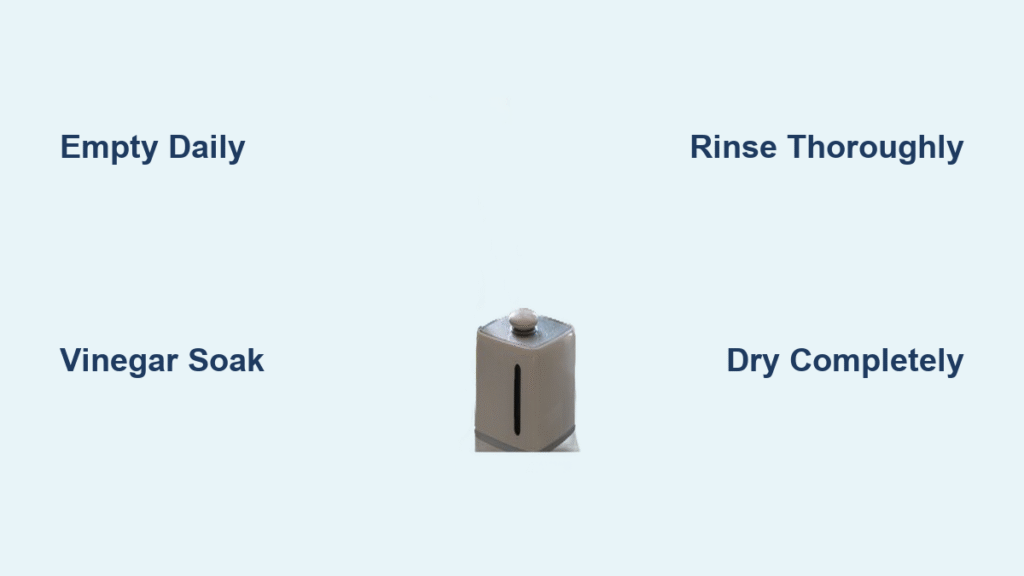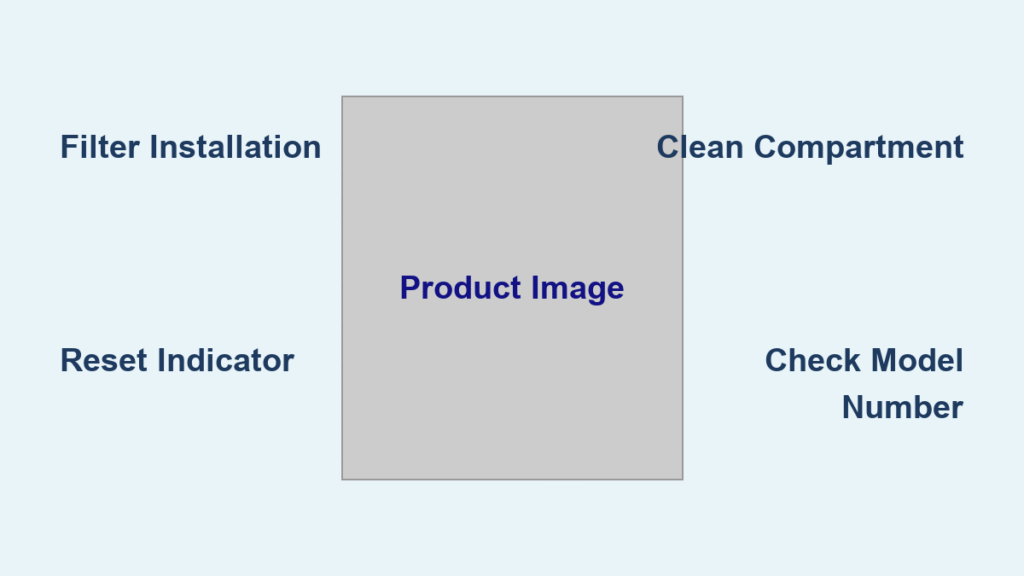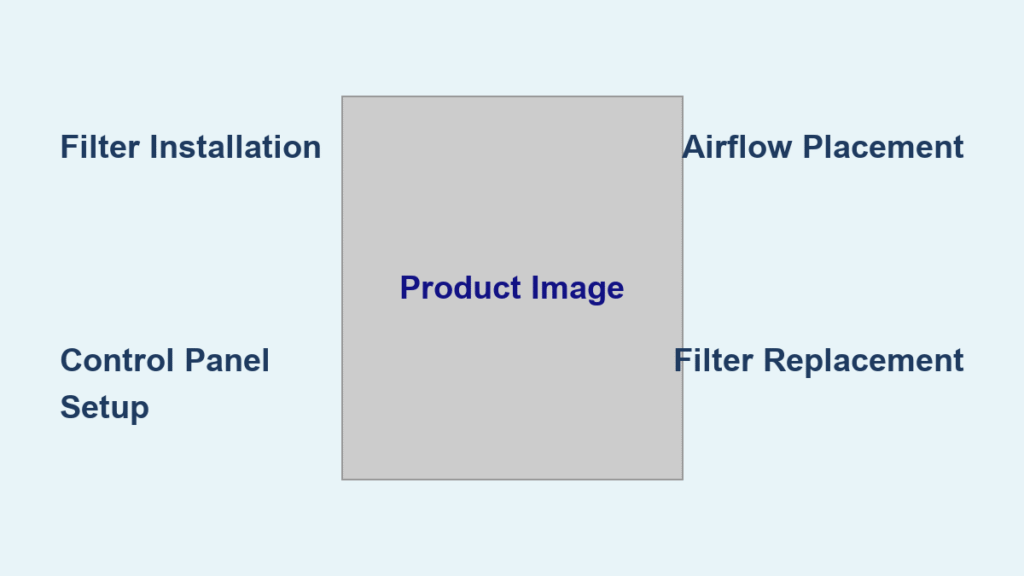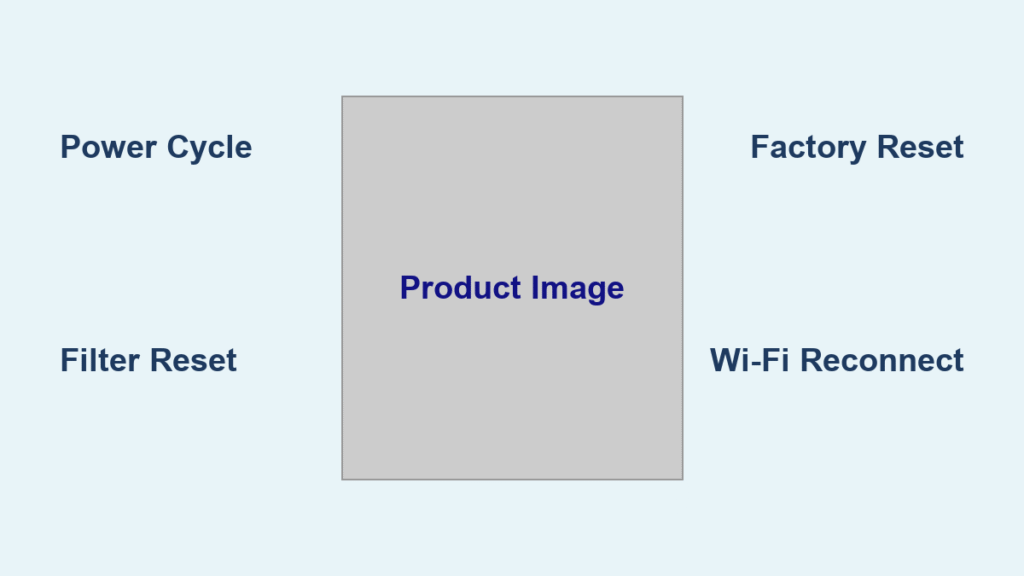That musty smell wafting from your humidifier isn’t just annoying—it’s a red flag for dangerous bacterial growth. When stagnant water sits in your unit, it becomes a breeding ground for mold, mildew, and harmful microorganisms that get blasted into your air as invisible mist. The CDC confirms these contaminants form resilient biofilms that survive standard cleaning, potentially triggering respiratory infections, asthma flare-ups, or skin irritations. Ignoring regular maintenance turns your air-quality helper into a health hazard.
This practical guide delivers field-tested cleaning protocols for every humidifier type, backed by EPA and CDC recommendations. You’ll learn exactly how to eliminate stubborn limescale, banish musty odors, and prevent mold regrowth—ensuring your device delivers genuinely clean moisture instead of airborne contaminants. Follow these steps to protect your family’s breathing health starting today.
Daily Two-Minute Cleaning Routine That Prevents Biofilm
Unplug your humidifier before touching any components—electrical safety is non-negotiable. Immediately after turning off the unit, empty every drop of water from both the tank and base reservoir. Leftover moisture creates the perfect environment for bacterial colonies to multiply overnight. Next, rinse the tank vigorously with warm water while swirling it to dislodge loose particles. For the base, wipe all surfaces with a dry paper towel, focusing on corners where water pools. Finally, leave all parts disassembled in a well-ventilated area until completely dry before reassembly.
Skipping this daily ritual guarantees biofilm formation—the slimy microbial layer that standard cleaning can’t penetrate. That sticky coating harbors pathogens that get aerosolized with every mist cycle. Consistent two-minute drying prevents 90% of deep-cleaning emergencies, making it the most critical habit for healthy operation.
Why Vinegar Alone Isn’t Enough for Daily Maintenance
While vinegar fights mineral buildup, it doesn’t kill all bacteria during brief daily rinses. Reserve vinegar soaks for weekly deep cleans. Daily maintenance relies on physical removal of water and thorough drying—no chemicals required. Using vinegar daily may degrade rubber seals over time, leading to leaks. Stick to plain water rinses for your daily routine.
Weekly Deep Clean Process for Crystal-Clear Mist
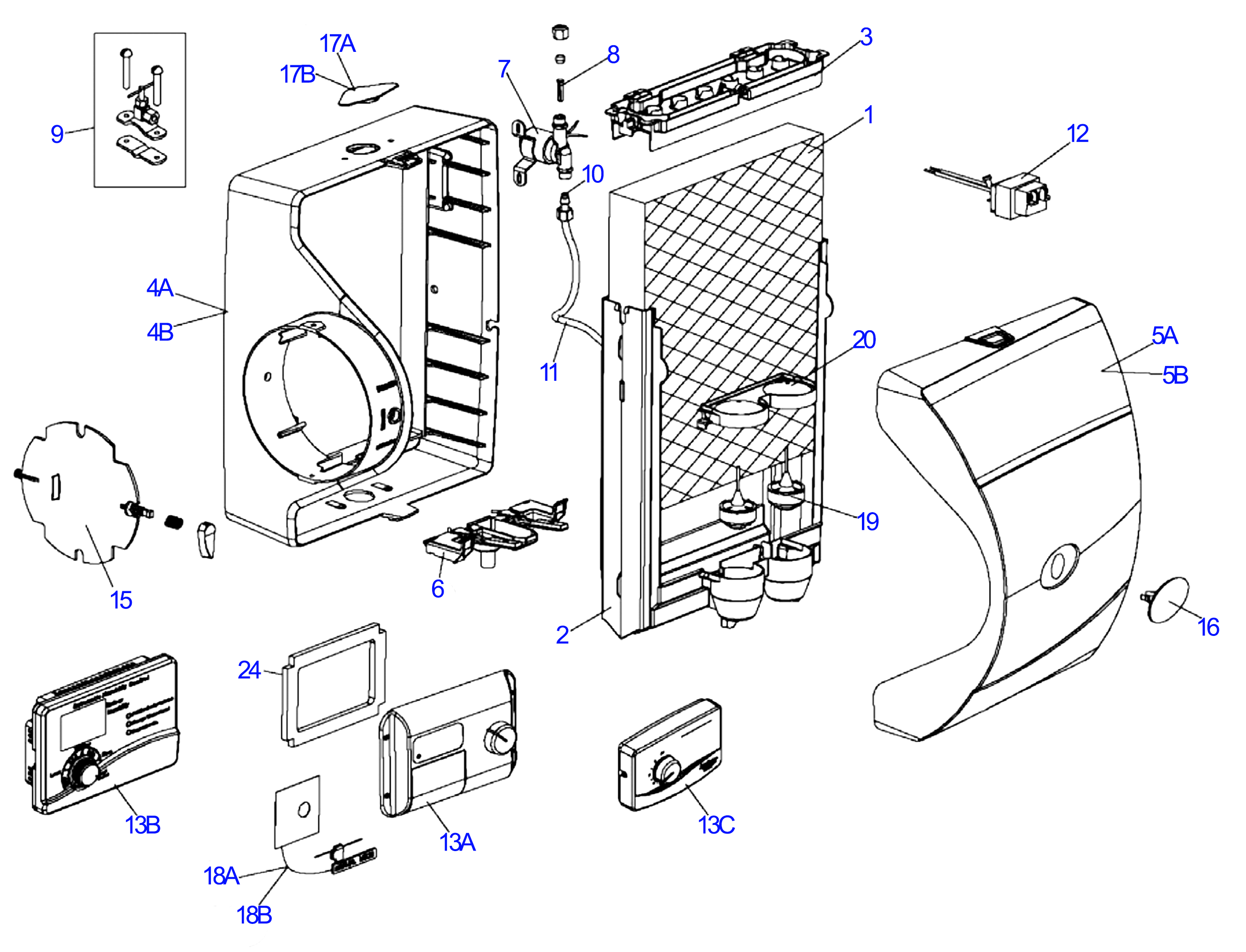
Disassemble Without Losing Your Mind
Remove every detachable part per your manual’s instructions. Take smartphone photos during disassembly to simplify reassembly—especially for models with multiple nozzles or hidden compartments. Lay components on a clean towel in the order they came out. Never force stuck parts; if something resists removal, check your manual for release mechanisms. For evaporative units, inspect the wick filter for brown discoloration indicating it’s time for replacement.
Vinegar Soak That Dissolves Limescale Fast
Mix equal parts white vinegar and warm water in your tank—no precise measuring needed. Fill the base reservoir until all water-contact surfaces are submerged. Let parts soak for 20-30 minutes minimum; heavy mineral deposits may require 60 minutes. During soaking, gently swirl the solution every 5 minutes to accelerate scale breakdown. Never use undiluted vinegar on ultrasonic oscillators or heating elements—it can damage sensitive components.
Targeted Scrubbing for Hidden Contamination Zones
Use a soft-bristled toothbrush to scrub seams, corners, and mist nozzles where limescale hides. For tight spaces like cap interiors or float mechanisms, roll cotton swabs into miniature scrubbers. Ultrasonic models require special attention to the oscillator ring—wipe it gently with a vinegar-dampened cloth without pressing down. Evaporative humidifiers need wick filters swished in cold water only; never apply chemicals that destroy antimicrobial coatings.
Rinse Protocol That Prevents Chemical Residue
Rinse every component under warm running water for 30+ seconds until the vinegar smell vanishes completely. Shake parts vigorously to eject trapped water from crevices. Lay components on a fresh towel near an open window or fan—never reassemble while damp. Any residual moisture reignites mold growth within hours. For stubborn vinegar odors, do a final rinse with distilled water.
Emergency Mold Eradication Protocol
Bleach Solution Method (Outdoor Only)
When black mold appears or odors persist, mix ½ teaspoon bleach per ½ gallon of water—never exceed this ratio. Place the tank on the base outdoors and let the solution drain through the unit for 20 minutes. Never perform this indoors—bleach vapors become hazardous when aerosolized. After soaking, empty immediately and rinse every part until bleach odors disappear. Run the unit with plain water for 5 minutes outdoors to flush traces before bringing it inside.
Hydrogen Peroxide Alternative for Sensitive Households
For homes with children or respiratory conditions, use 3% hydrogen peroxide as the EPA recommends. Fill the tank with straight peroxide and circulate through the system for 20 minutes. This kills mold spores without toxic fumes. Rinse thoroughly with distilled water afterward—peroxide leaves no residue but can degrade rubber if left overnight.
Type-Specific Cleaning You Can’t Skip

Ultrasonic Units: Protect the Oscillator
Remove demineralization cartridges first—they’re sacrificial components meant to be replaced. Add 2 tablespoons vinegar directly to the water tank (no dilution), plus a small amount in the base. Soak for 20 minutes, then clean the dark oscillator ring with a microfiber cloth only—never metal tools. Ultrasonic mist carries contaminants deep into lungs, making weekly disinfection non-optional.
Evaporative Wick Systems: Filter Lifespan Hacks
Replace wicks every 3-6 months; brown stains mean immediate replacement. For weekly cleaning, swish the filter in cold water only—chemicals destroy its antimicrobial coating. Never squeeze or twist filters; gently shake out water and air-dry vertically. Store spare filters in sealed containers to prevent dust contamination.
Warm Mist Models: Scale Removal Without Damage
Submerge the heating element in undiluted vinegar for 20+ minutes. While soaking, use a soft brush to gently scrub scale—never metal scourers that scratch the element. Heavy buildup requires repeating the soak. After rinsing, inspect for white mineral rings; persistent spots need a second vinegar treatment.
Prevent Mineral Buildup Before It Starts
Water Quality Switch That Cuts Cleaning Time in Half
Ditch tap water immediately—its minerals create white dust that coats furniture and aggravates breathing issues. Distilled or demineralized water reduces limescale by 95%, meaning fewer deep cleans. This single change extends your humidifier’s lifespan and prevents respiratory irritation from mineral-laden mist.
Placement Mistakes That Accelerate Contamination
Position units 2-4 feet off the floor on water-resistant surfaces like plastic trays. Keep 12+ inches from walls to prevent moisture damage (not covered by warranties). Avoid electronics—mist condensation can fry circuits. Ensure 6+ inches of clearance around the unit for proper airflow and drying.
Humidity Control to Stop Mold at the Source
Maintain 40-50% indoor humidity using a $10 hygrometer—higher levels encourage mold growth in your humidifier and walls. Adjust output based on room size; oversized units create damp environments where pathogens thrive. Never run humidifiers above 55% humidity, especially in bedrooms.
Storage Protocol That Prevents Seasonal Mold

Deep clean and disinfect before storing—never pack away a damp unit. Disassemble completely and air-dry all parts for 48+ hours. Store components in breathable cotton bags (not plastic) in climate-controlled spaces. Wick filters must go in sealed containers with silica gel packets to absorb ambient moisture. Check stored units monthly for musty smells indicating hidden mold.
Critical Safety Violations to Avoid
Never mix bleach and vinegar—this creates chlorine gas that can hospitalize you. Always unplug before any maintenance; submerged electrical components cause electrocution risks. Work in ventilated areas during disinfection—bleach fumes concentrate dangerously in small rooms. Never reassemble damp parts; trapped moisture breeds mold within hours. Run a final water cycle after disinfecting to flush chemical traces.
White Dust Emergency Fix
That fine white powder coating your furniture means tap water minerals are being aerosolized. Switch to distilled water immediately and do a vinegar soak. Persistent dust indicates internal scale buildup—repeat the vinegar soak twice weekly until resolved. Ignoring this aggravates asthma and leaves permanent residue on surfaces.
Weak Mist Troubleshooting Flowchart
- Check water level—many units auto-shut off when low
- Inspect nebulizer/heating element for white crust
- Soak affected part in vinegar for 30 minutes
- Verify no blockages in mist nozzle
- Replace filter if evaporative model
Most “broken” humidifiers just need mineral deposits removed—don’t replace it before trying this.
Your humidifier shouldn’t compromise your health. By implementing these daily wipe-downs and weekly vinegar soaks, you transform it from a contamination risk into a true air-quality ally. Start tonight: empty, rinse, and dry every component—it takes less time than brushing your teeth but protects your family’s breathing health all season. For persistent mold or odors, the bleach disinfection protocol outlined here will reset your unit to like-new condition. Remember: clean water in equals clean mist out.

